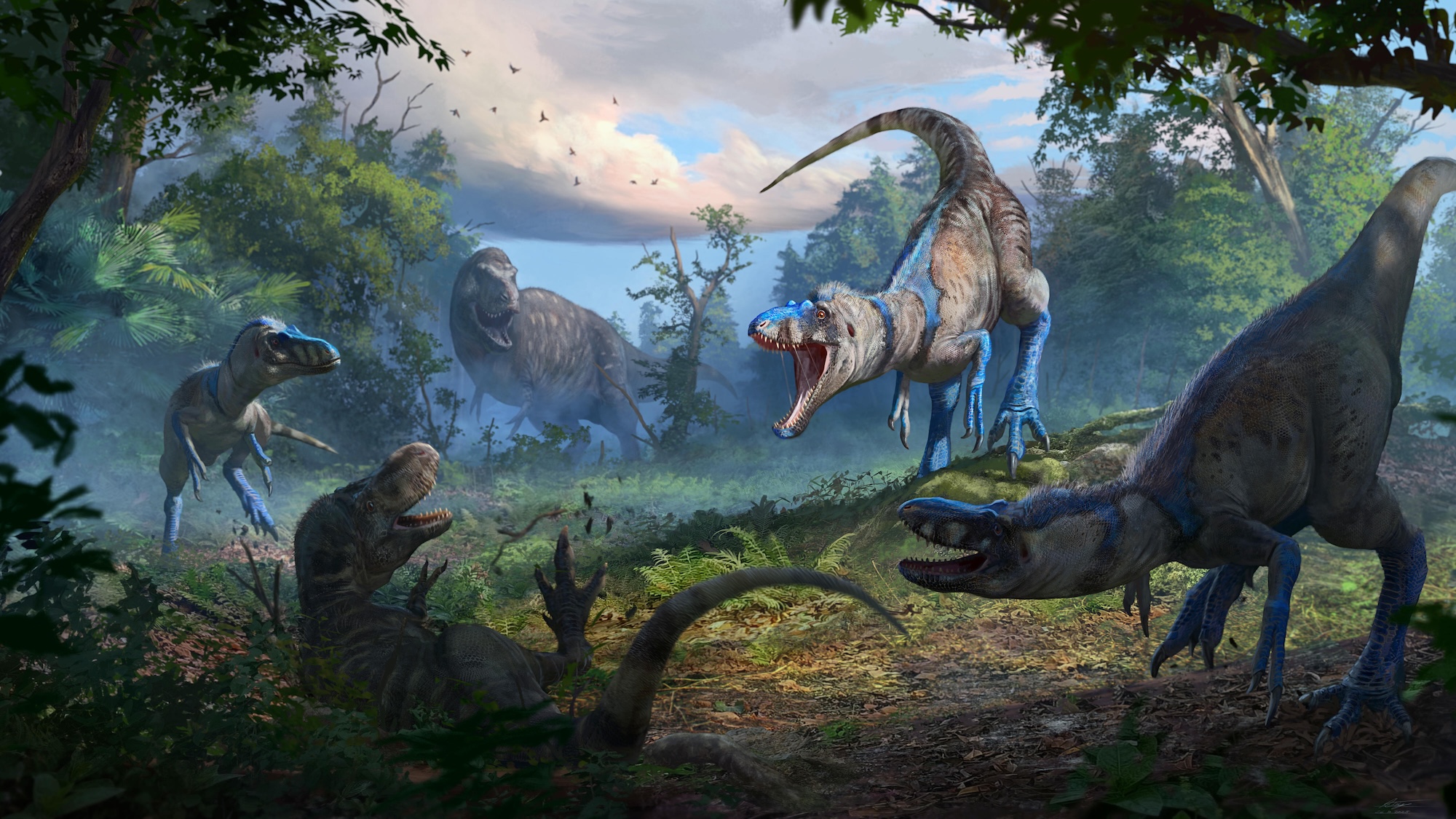Science
New Research Identifies Diminutive Tyrannosaur as Separate Species

Paleontologists have settled a long-standing debate regarding a small dinosaur fossil discovered in Montana, revealing it as a distinct species closely related to the infamous Tyrannosaurus rex. Researchers from North Carolina State University and Ohio University have identified this new species as Nanotyrannus lancensis, as detailed in a study published on October 30, 2023, in the journal Nature.
The origins of this debate trace back to a skull found in 1946 at the Hell Creek Formation, a site renowned for its rich fossil deposits. Initially categorized as a species of Gorgosaurus, the specimen was later proposed to belong to a separate, smaller genus of tyrannosaurs. This sparked vigorous discussions among paleontologists, with some asserting it was simply an immature T. rex, while others argued for its classification as a new species. The implications of recognizing Nanotyrannus as a separate entity would challenge the notion that T. rex was the sole tyrannosauroid in North America during the late Cretaceous period.
New Findings Reinforce Distinct Species Classification
The research team, led by paleontologists Lindsay Zanno and Lawrence Witmer, conducted a recent expedition to the Hell Creek Formation, where they discovered an exceptionally preserved skeleton of a tyrannosauroid. After analyzing the fossil, they concluded that both this new specimen and the 1946 skull belonged to Nanotyrannus.
Key evidence supporting this classification came from the age and morphological features of the newly discovered specimen. The analysis revealed that the bones were nearly fully matured, indicating they were not juvenile remains. Further examination suggested that Nanotyrannus had unique bone-growth patterns compared to T. rex, reinforcing the argument for its status as a distinct species.
The study proposes the existence of at least two species within the Nanotyrannus genus: Nanotyrannus lancensis and a newly described Nanotyrannus lethaeus. Adult Nanotyrannus measured about 18 feet in length and weighed approximately 1,550 pounds, significantly smaller than the formidable T. rex, which could exceed 42 feet long and weigh over nine tons.
Implications for Dinosaur Diversity in the Late Cretaceous
The emergence of Nanotyrannus suggests that T. rex coexisted with at least one other tyrannosaur for approximately one million years leading up to the Cretaceous-Paleogene extinction event. This finding contributes to the understanding that dinosaurs were thriving rather than declining prior to their mass extinction.
“Our results undermine a nearly uniform consensus among theropod specialists and rectify a significant taxonomic error underpinning decades of research,” the authors stated. “The impact is beyond our ability to summarize here.” This new classification not only expands the known diversity of Cretaceous predators but also highlights the complexity of dinosaur evolution during this era.
The study of Nanotyrannus and its implications will likely prompt further research and discussion within the paleontological community, as scientists seek to understand the evolutionary relationships among these ancient giants.
-

 Sports2 weeks ago
Sports2 weeks agoSteve Kerr Supports Jonathan Kuminga After Ejection in Preseason Game
-

 Business2 weeks ago
Business2 weeks agoTyler Technologies Set to Reveal Q3 2025 Earnings on October 22
-

 Science2 weeks ago
Science2 weeks agoChicago’s Viral ‘Rat Hole’ Likely Created by Squirrel, Study Reveals
-

 Politics2 weeks ago
Politics2 weeks agoDallin H. Oaks Assumes Leadership of Latter-day Saints Church
-

 Lifestyle2 weeks ago
Lifestyle2 weeks agoKelsea Ballerini Launches ‘Burn the Baggage’ Candle with Ranger Station
-

 Lifestyle2 weeks ago
Lifestyle2 weeks agoDua Lipa Celebrates Passing GCSE Spanish During World Tour
-

 Entertainment2 weeks ago
Entertainment2 weeks agoZoe Saldana Advocates for James Cameron’s Avatar Documentary
-

 Health2 weeks ago
Health2 weeks agoRichard Feldman Urges Ban on Menthol in Cigarettes and Vapes
-

 Health2 weeks ago
Health2 weeks agoCommunity Unites for Seventh Annual Mental Health Awareness Walk
-

 World2 weeks ago
World2 weeks agoD’Angelo, Iconic R&B Singer, Dies at 51 After Cancer Battle
-

 Business2 weeks ago
Business2 weeks agoMLB Qualifying Offer Jumps to $22.02 Million for 2024
-

 Sports2 weeks ago
Sports2 weeks agoPatriots Dominate Picks as Raiders Fall in Season Opener









